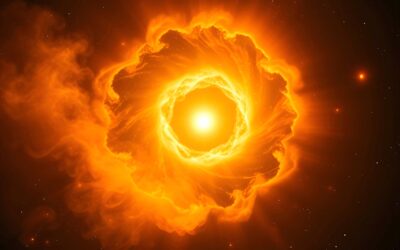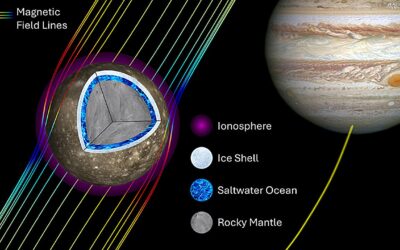Space exploration continues to push the boundaries of human knowledge, unveiling mysteries of the universe that were once unimaginable. The last decade, in particular, has been a period of immense discovery, thanks to advances in technology, telescopes, and international collaboration. From finding new exoplanets that could harbor life to observing the first-ever photograph of a black hole, the field of space science has been transformed. In this article, we’ll take a look at the Top 10 Space Discoveries of the Last Decade that have reshaped our understanding of the cosmos.
1. First Image of a Black Hole (2019)
In 2019, the Event Horizon Telescope (EHT) team made history by unveiling the first-ever image of a black hole, located at the center of the galaxy M87. This discovery marked a monumental achievement in astrophysics, providing a direct observation of the event horizon—the boundary beyond which nothing, not even light, can escape. The image showed a glowing ring of gas and dust around the shadow of the black hole, confirming Einstein’s theory of general relativity and opening new avenues for studying these mysterious objects.
The black hole at the heart of M87 is estimated to be 6.5 billion times the mass of the Sun, and the EHT’s ability to capture this image came from combining data from several radio telescopes around the globe, creating a planet-sized “virtual telescope”. This discovery has provided invaluable insights into the nature of black holes and the behavior of matter under extreme conditions.
2. Detection of Gravitational Waves (2015)
One of the most groundbreaking discoveries in modern physics was the detection of gravitational waves. In September 2015, the LIGO (Laser Interferometer Gravitational-Wave Observatory) collaboration confirmed the existence of these ripples in spacetime, first predicted by Albert Einstein over a century ago. Gravitational waves are generated by massive objects, such as colliding black holes or neutron stars, distorting spacetime as they move.
The first detection, made when two black holes collided 1.3 billion light-years away, opened a new era of gravitational-wave astronomy. This discovery provides an entirely new way to observe and study the universe, offering insights into phenomena that cannot be seen with traditional telescopes, such as merging compact objects and the dynamics of spacetime itself.
3. The Discovery of Water on Exoplanets (Various Years)
The search for life beyond Earth has long been a goal of space exploration. The last decade has brought us closer to that goal with the discovery of water on various exoplanets. In particular, the Kepler Space Telescope has identified several exoplanets in the habitable zone—the region around a star where conditions might support liquid water.
One notable discovery is the planet K2-18b, found in 2019, which orbits a red dwarf star about 124 light-years away. This planet is in the habitable zone, and scientists detected the presence of water vapor in its atmosphere. While we don’t yet know if life exists there, the presence of water is a crucial factor for life as we know it. The discovery of water on exoplanets raises the possibility of finding Earth-like conditions on other worlds.
4. The Search for Life on Mars (Ongoing)
The search for signs of past or present life on Mars has been one of the most exciting aspects of space exploration in the last decade. In 2012, NASA’s Curiosity Rover landed on Mars and began studying the Gale Crater, finding evidence that the region once had the right conditions to support microbial life. Since then, numerous missions have followed, including the Perseverance Rover and the Ingenuity Helicopter, both of which landed on Mars in February 2021.
In addition to searching for life, these missions have been instrumental in studying the planet’s geology, climate, and the possibility of human colonization in the future. Perseverance’s discovery of organic molecules, as well as its examination of ancient riverbeds and delta formations, suggests that Mars may have once been habitable.
5. The Discovery of Fast Radio Bursts (2017)
In 2017, scientists identified the origin of fast radio bursts (FRBs), which are extremely brief but highly energetic signals detected from deep space. These bursts were first discovered in 2007, but their source remained a mystery for years. After extensive observations, it was determined that at least some of these bursts come from distant galaxies, likely produced by magnetars—highly magnetized, rotating neutron stars.
The discovery of FRBs has led to new questions about their potential causes and their role in the universe. Scientists are still debating whether FRBs are the result of natural cosmic phenomena, such as the collapse of massive stars, or if there is a more exotic explanation at play.
6. The James Webb Space Telescope (2021)
The James Webb Space Telescope (JWST), launched in December 2021, is one of the most advanced space telescopes ever built. Designed to look deeper into the universe than ever before, it is equipped with powerful infrared instruments that allow it to observe distant galaxies, stars, and exoplanets in unprecedented detail. The JWST is expected to make significant contributions to our understanding of the early universe, galaxy formation, and the chemistry of life.
By studying the atmospheres of exoplanets in particular, the JWST may help answer questions about the potential for life elsewhere in the galaxy. The telescope’s ability to peer through dust clouds and detect faint signals from the cosmos has the potential to revolutionize astrophysics and broaden our understanding of the universe.
7. The First Interstellar Object: ‘Oumuamua (2017)
In 2017, astronomers discovered an object from outside our solar system, later named ‘Oumuamua. This elongated, cigar-shaped object was unlike anything seen before. It passed through our solar system at an incredibly high speed, and its unusual behavior—such as its acceleration and peculiar shape—led to numerous theories about its origin.
Some researchers speculated that ‘Oumuamua could be a comet or asteroid, while others suggested it might even be an artificial probe from another civilization. Regardless of its origin, ‘Oumuamua’s discovery was the first clear evidence of an interstellar object passing through our solar system, opening up a new field of study into objects that come from beyond our Sun’s influence.
8. New Insights into the Nature of Dark Matter and Dark Energy
While we still don’t fully understand the nature of dark matter and dark energy, the last decade has seen significant progress in uncovering their mysteries. Dark matter, which makes up approximately 27% of the universe’s mass-energy content, has been detected indirectly through its gravitational effects on galaxies. Meanwhile, dark energy, responsible for the universe’s accelerating expansion, continues to elude direct observation.
Scientists have proposed new experiments and theories in hopes of detecting dark matter particles or gaining insights into dark energy. Some of the most promising discoveries come from the Large Hadron Collider (LHC), which has attempted to simulate conditions that could reveal these elusive components of the universe.
9. The Discovery of a Second Earth: Proxima b (2016)
In 2016, astronomers discovered Proxima b, an exoplanet orbiting the star Proxima Centauri, which is the closest star to our Sun. Proxima b is located in the habitable zone of its star, where liquid water could exist, and its size and mass are similar to those of Earth. While the planet’s habitability remains uncertain, the discovery sparked significant interest in the possibility of finding another Earth-like world in the relatively nearby universe.
The proximity of Proxima Centauri—only 4.24 light-years away—makes it a prime target for future space exploration missions, especially as technology advances in the coming decades. It represents one of the best candidates for discovering extraterrestrial life.
10. The Rise of Citizen Science in Astronomy
Over the past decade, the field of citizen science has seen a dramatic rise, with ordinary people contributing to significant space discoveries. Projects like Zooniverse, which engage the public in classifying galaxies, spotting asteroids, and identifying exoplanets, have democratized space exploration. The discovery of Tabby’s Star, which exhibited unusual dimming patterns, was made in part thanks to a group of amateur astronomers who noticed its strange behavior.
The involvement of citizen scientists has allowed for a faster accumulation of data and has expanded the reach of space research to a broader public, leading to a more collaborative approach to understanding the cosmos.
Conclusion
The last decade has seen incredible advancements in our understanding of the universe, from detecting gravitational waves to imaging a black hole and discovering potentially habitable exoplanets. These discoveries not only expand our knowledge of space but also bring us closer to answering some of humanity’s oldest questions: Are we alone in the universe? and What is the true nature of the cosmos?
As technology continues to advance and our exploration efforts grow, the next decade promises even more groundbreaking discoveries that will shape the future of space science and our understanding of the universe. The search for answers is far from over, and with each discovery, we move one step closer to understanding the vast, awe-inspiring cosmos we call home.






